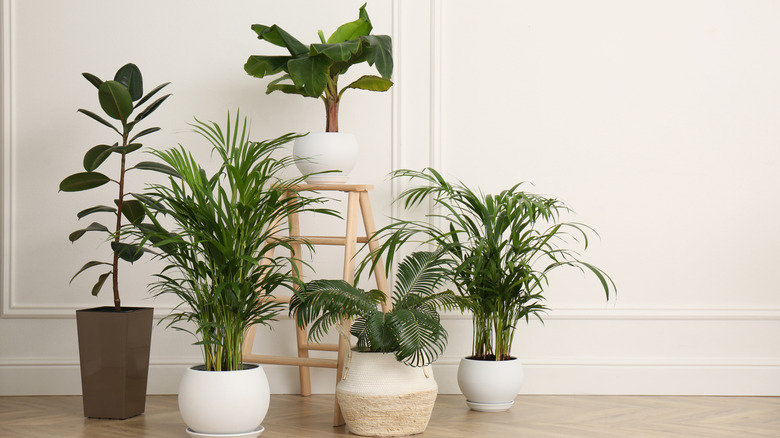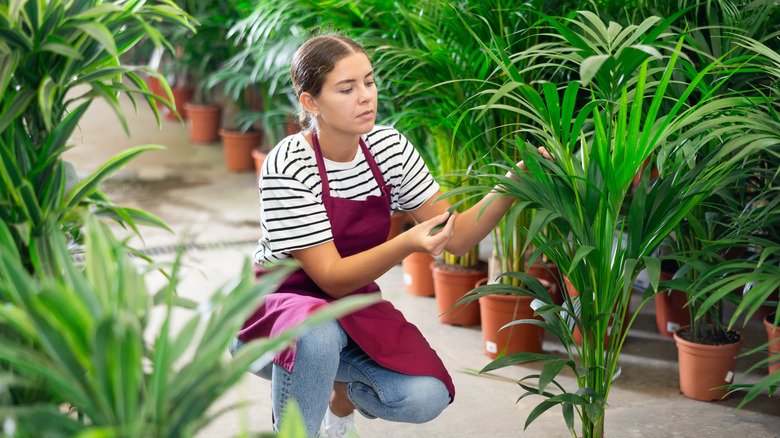Purify Your Home's Air With The Addition Of One Popular Type Of Houseplant
Volatile organic compounds, or VOCs, are emitted by many common household products (cleaners, disinfectants, degreasers, paints, and pesticides, to name a few) as well as building materials, furniture, and office equipment. It's hard to avoid being exposed to VOCs and other pollutants even within our own homes. Thankfully, there's an easy solution to help offset the problem that doesn't involve more chemicals — and you'll be beautifying your home at the same time. All you need is a palm plant.
Scientists have found that a number of palm varieties that can potentially help to cleanse the air in your home. A study in the International Journal of Engineering Technology Science and Research about the role of plants in indoor air remediation reported that the bamboo palm (Chamaedorea seifrizii), areca palm (Chrysalidocarpus lutescens), dwarf date palm (Phoenix roebelenii), and broadleaf lady palm (Rhapis excelsa) can all remove toluene, xylene, and formaldehyde. Toluene and xylene are used in products commonly found in homes, such as nail polish, paint and paint thinner, wood stains, and adhesives. Severe poisoning can lead to affected vision and hearing, vomiting, difficulty breathing, dizziness, and more. Similar symptoms are associated with exposure to formaldehyde, a gas used to make plastics, plywood adhesive, and foam insulation, and also is used as an insecticide and plant fungicide.
The areca palm gets dual recognition as one of the highest oxygen-producing houseplants. In fact, four of them provide the equivalent of nearly a day's worth of oxygen for one person. The majesty palm (Ravenea rivularis) is another variety that has air-purifying abilities.
How plants purify the air
Researchers have long affirmed that plants are a natural way to add oxygen to the air and successfully help in purifying the environment in your home. This process is called phytoremediation, encompassing all the ways that plants serve as a clean-up crew for the environment — both inside a building and outside in nature. You're likely familiar with the process of photosynthesis, where plants take in carbon dioxide that we exhale, and emit oxygen, which we then inhale. Plants also absorb air pollutants through stomata (tiny openings in their leaves), through their roots and soil, or when contaminants stick to the plant's surface. Thankfully these pollutants are not harmful to plants. They are moved to other parts of the plant and are broken down, used for energy, or converted into harmless vapors to release back into the air.
To ensure that your palms take care of you, you also need to know how to care for potted palms. Palms are native to tropical climates, which means they thrive in warm and humid homes. Occasionally mist the fronds or, better yet, spoil them with a humidifier, and don't wait too long to water them. Again, think tropical, not desert. Palms love indirect sunlight but can burn when exposed to full sun. Since some palms can grow quite large, make sure you know exactly what kind you're buying and that your home can accommodate its full size.

